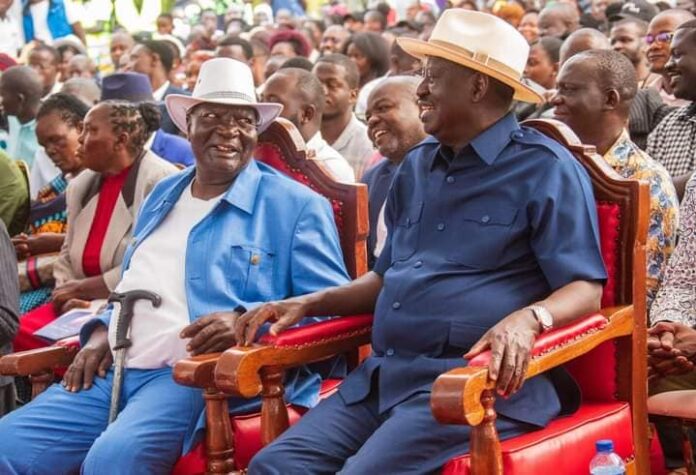The decision by the family and elders to bury the late Siaya Municipal Council Mayor, Oruenjo Umidha, inside his palatial house has left many questioning the practice.
The late politician, known by the nickname “Maamaa,” served as the ODM chairman for Alego Usonga.
He passed away three weeks ago and will be buried on September 28.
Oruenjo Umidha, who was in his late 70s, was a beloved figure who had served as a councilor and mayor for many years.
Abanja Kotieno, a Kakan clan elder known as Ogai, told Kondele News that the late patriarch had specifically requested to be buried inside his grand duol (traditional Luo house) located in the middle of his compound.
“He told me on several occasions that in the event of his death, his remains should be interred inside that structure, which he built in the middle of the compound. This may sound strange to those unfamiliar with Luo culture,” said Mr. Abanja.
He continued, “In the past, people used to be buried inside their houses. This was our culture due to the circumstances of those times.”
One of the main reasons for this burial practice, according to Mr. Abanja, was the presence of roaming wild animals that would retrieve bodies from graves.
Burying inside the house allowed kinsmen to watch over the body and protect it from scavenging animals like hyenas.
Mr. Abanja praised the deceased, noting that the choice of the duol was appropriate because it symbolized authority.
“According to our cultural beliefs, when one dies, they remain alive in spirit, known as the living dead. By resting in the middle of the compound, he shall be looking after his family members,” added Mr. Abanja.
Tracing the evolution of burial practices, Mr. Abanja explained that the Luo community initially buried their dead inside their houses.
Over time, this shifted to burying the remains in front of the house, with men on the right-hand side and women on the left-hand side. To deter wild animals, the community would light fires, known as magenga, around the graves.
“Burying in front of the house was eventually replaced by burying behind the house. As the community progresses, there are customs we learn and others we drop,” he pointed out.

